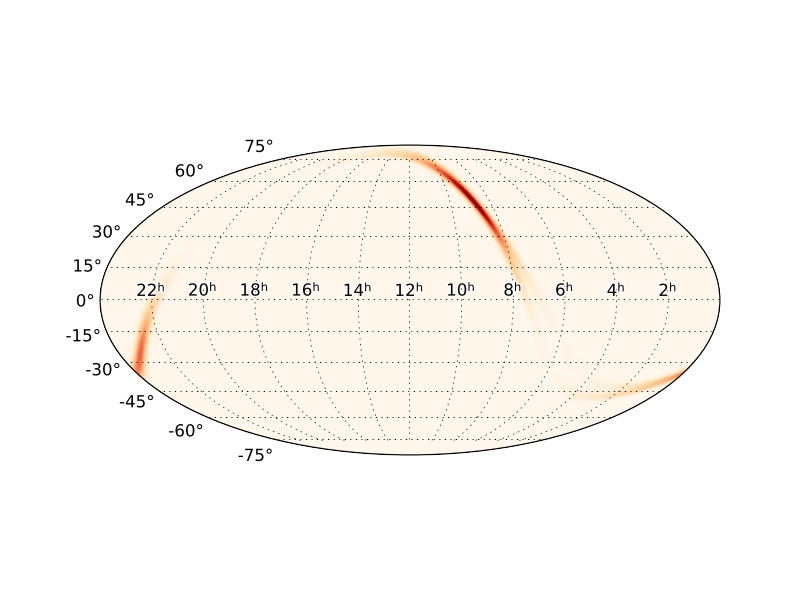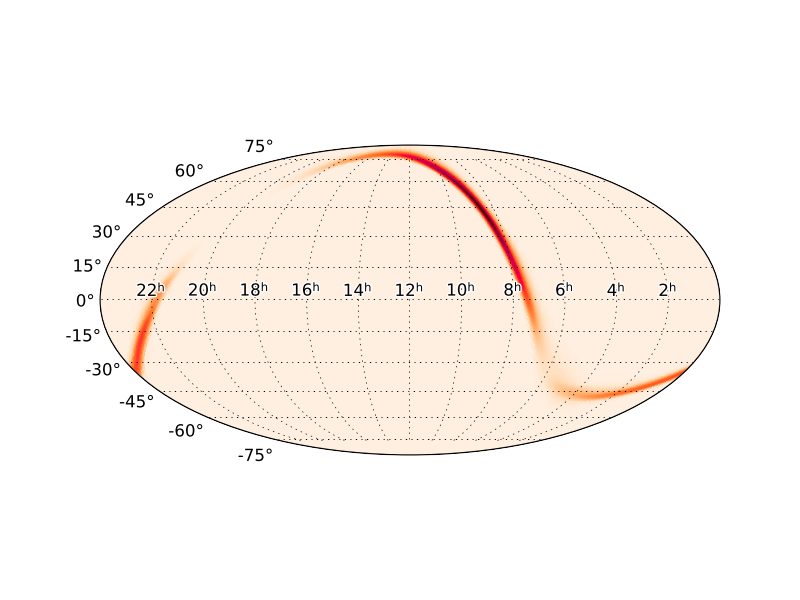
This page has been prepared by the LIGO Scientific Collaboration (LSC) and the Virgo Collaboration to inform the broader community about a confirmed astrophysical event observed by the gravitational-wave detectors, and to make the data around that time available for others to analyze.
GW170104 was observed at GPS time 1167559936.6 == January 04 2017, 10:11:58.6 UTC. It was recovered with a network signal-to-noise ratio of 13 and a false-alarm-rate of once per 70,000 years. The event was detected in data from the LIGO Hanford and LIGO Livingston observatories.
| Quantity | Value | Unit |
|---|---|---|
| UTC time | 2017-01-04T10:11:58.6 | |
| GPS time | 1167559936.6 | |
| Primary mass | 31.2 +8.4 -6.0 | Msun |
| Secondary mass | 19.4 +5.3 -5.9 | Msun |
| Chirp mass | 21.1 +2.4 -2.7 | Msun |
| Total mass | 50.7 +5.9 -5.0 | Msun |
| Final mass | 48.7 +5.7 -4.6 | Msun |
| Radiated energy | 2.0 +0.6 -0.7 | Msun c^2 |
| Peak luminosity | 3.1 +0.7 -1.3 | 10^56 erg s^-1 |
| Effective inspiral spin | -0.12 +0.21 -0.30 | |
| Final spin | 0.64 +0.09 -0.20 | |
| Luminosity distance | 880 +450 -390 | Mpc |
| Source redshift | 0.18 +0.08 -0.07 | |
| False alarm rate | < 1.4e-05 | yr^-1 |
| Signal to Noise Ratio | 13 | |
| Sky localization | 1200 | deg^2 |
The data from the observatories from which the science is derived:
| Hanford | Livingston | |
|---|---|---|
| 32 seconds (event is 16.60 seconds from start) | hdf5 gwf txt.gz |
hdf5 gwf txt.gz |
| 4096 seconds (event is 2048.60 seconds from start) | hdf5 gwf txt.gz |
hdf5 gwf txt.gz |
| Hanford | Livingston | |
|---|---|---|
| 32 seconds (event is 16.60 seconds from start) | hdf5 gwf txt.gz |
hdf5 gwf txt.gz |
| 4096 seconds (event is 2048.60 seconds from start) | hdf5 gwf txt.gz |
hdf5 gwf txt.gz |
The location of GW170104 in the sky can be determined only roughly using the data from the two gravitational-wave detectors. A "skymap", representing the position probability as a function of astronomical sky coordinates (right ascension and declination), was initially computed by a software package called BAYESTAR. After final calibration of the data, the skymap was recomputed with a more sophisticated package called LALInference which simultaneously adjusts all the source parameters and allows for calibration uncertainties.
Low-latency (rapid) skymap from BAYESTAR:
 |
FITS DATA |
 |
FITS DATA |
A python library for reading the FITS DATA is healpy. A very simple healpy code to work with LIGO-Virgo skymaps is here. A large number of simulated skymaps is available here and here.
There is a technical details page about the data linked above, and
feel free to contact us.
Revision History